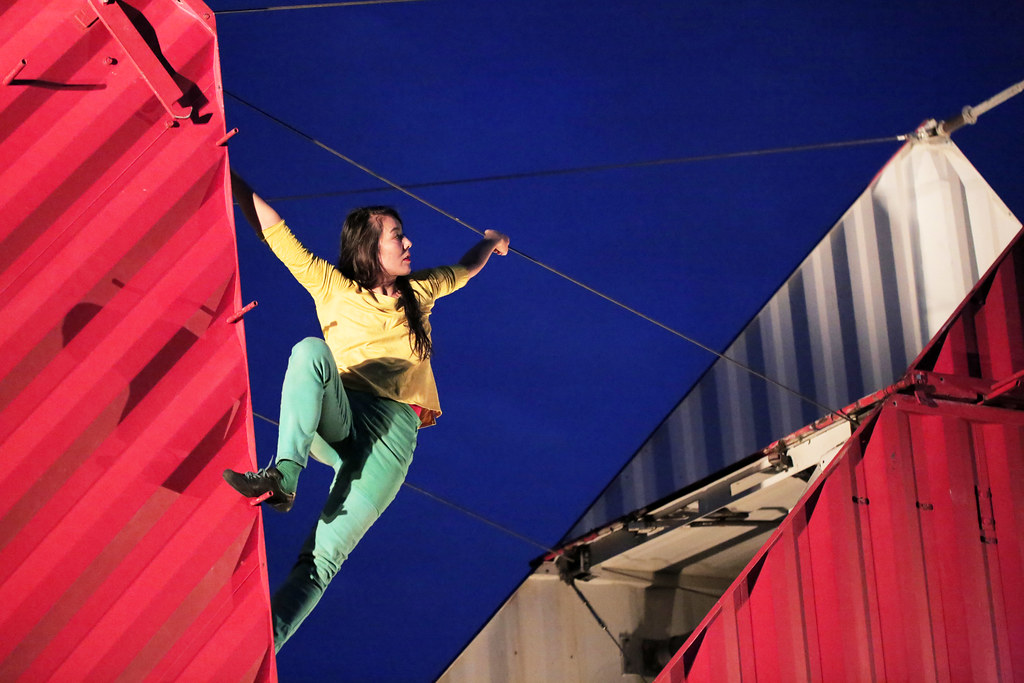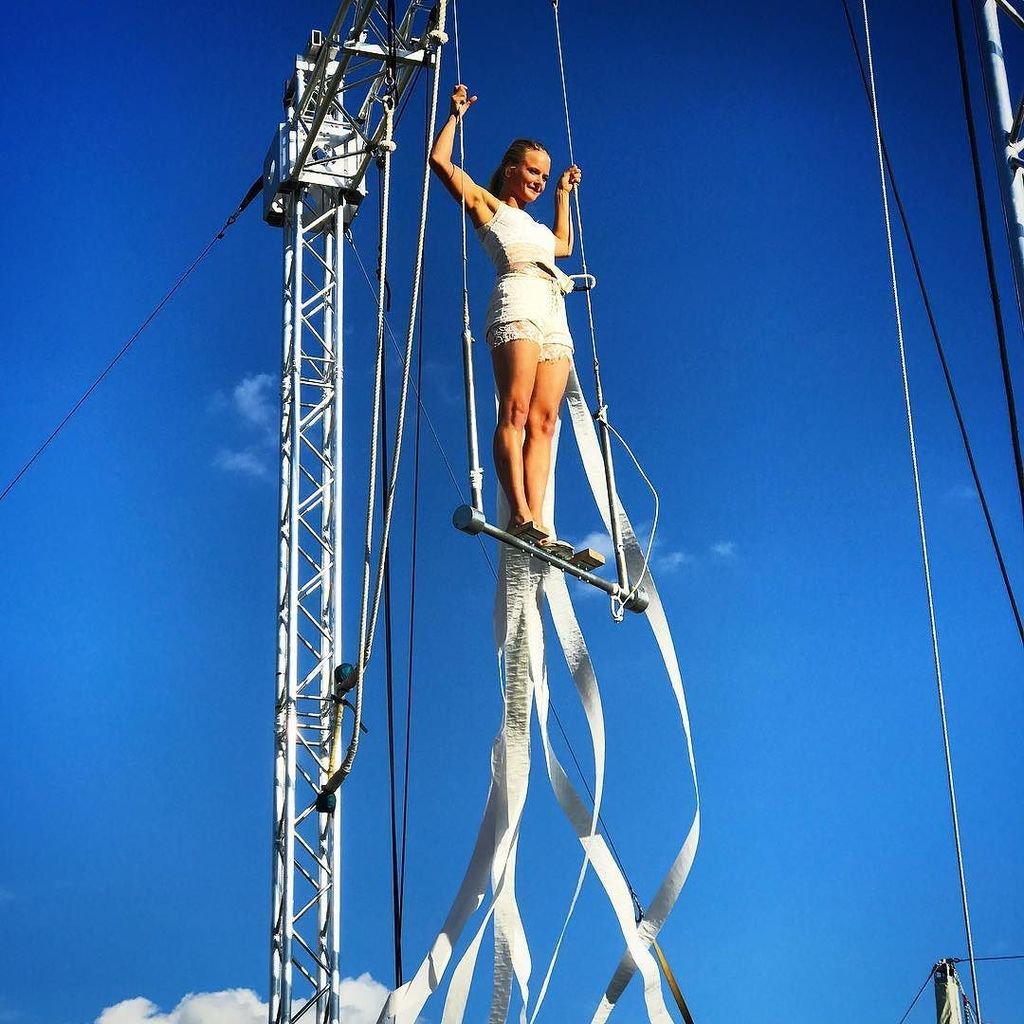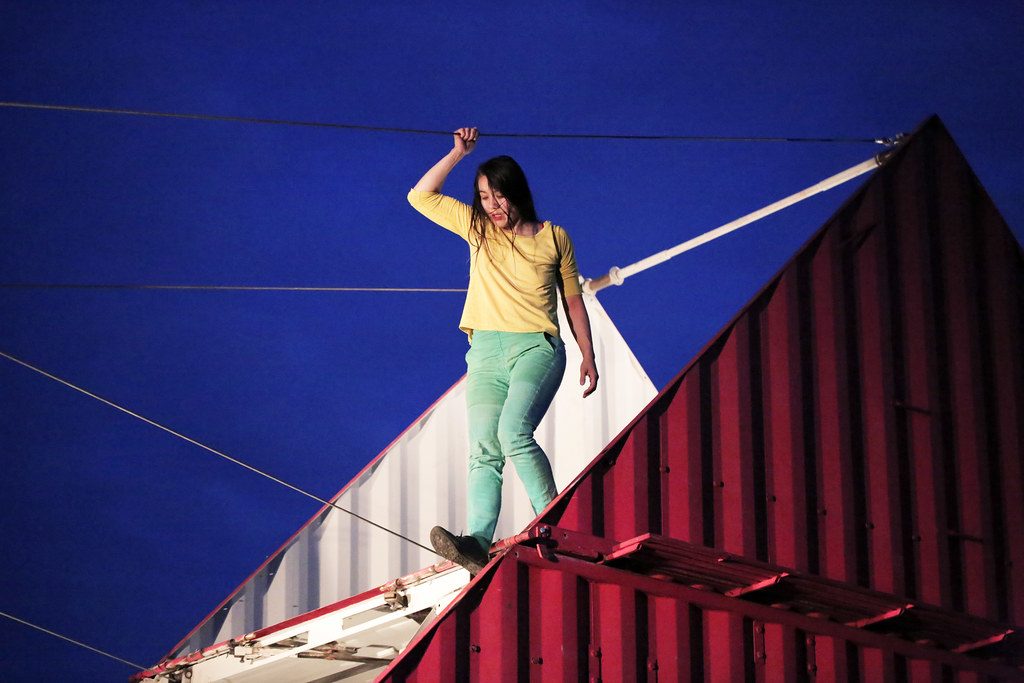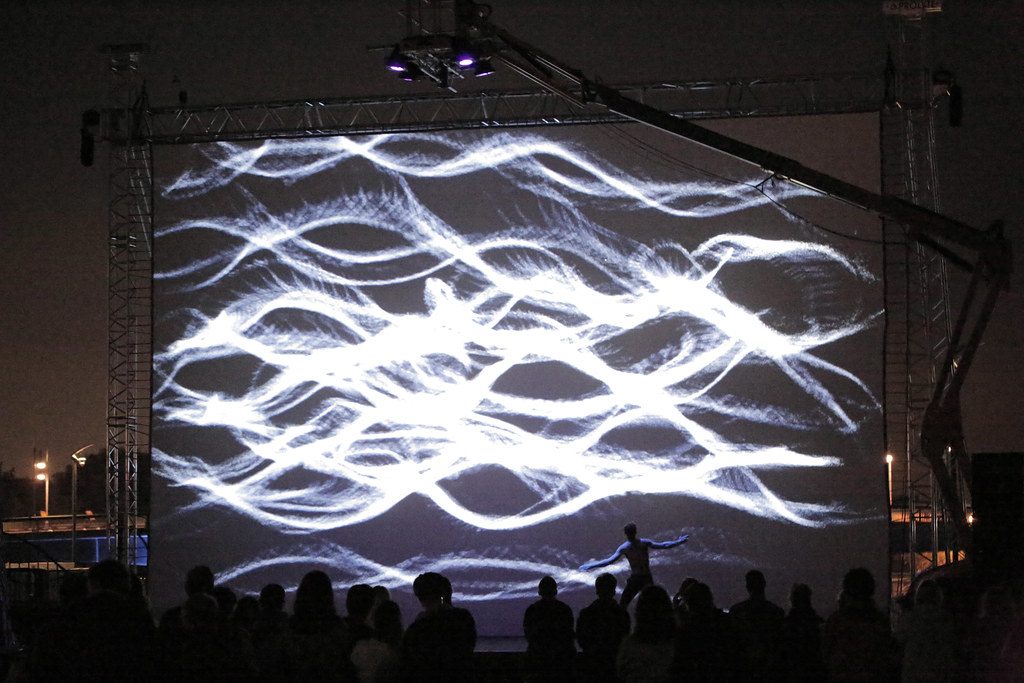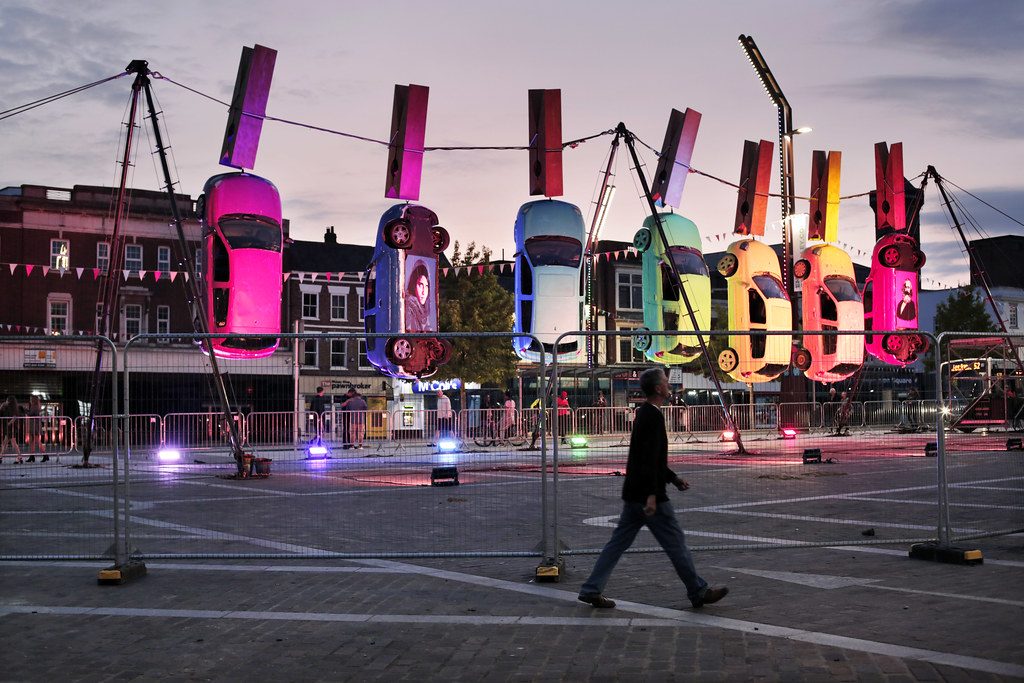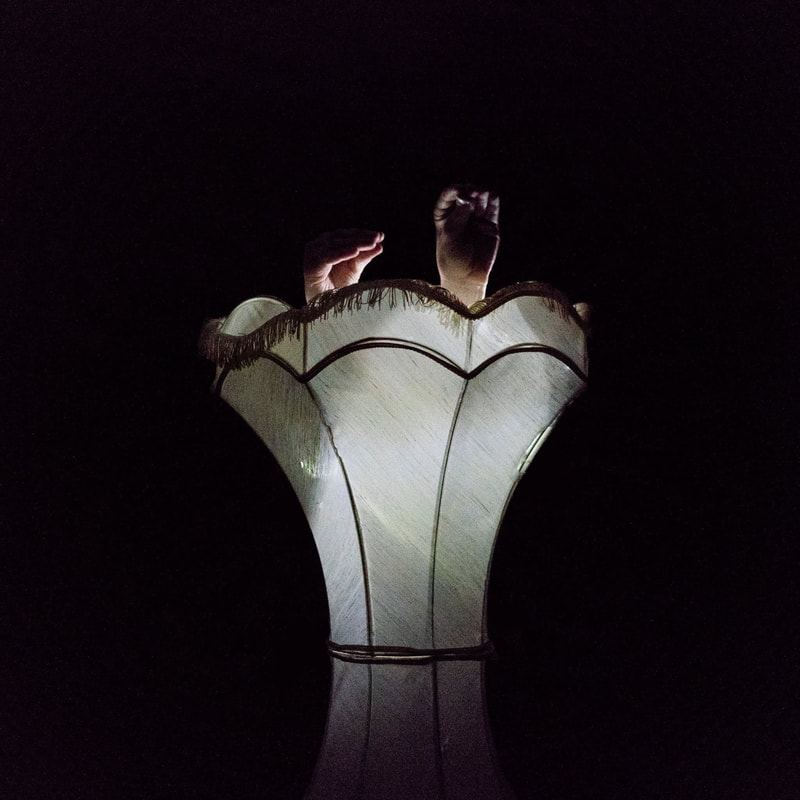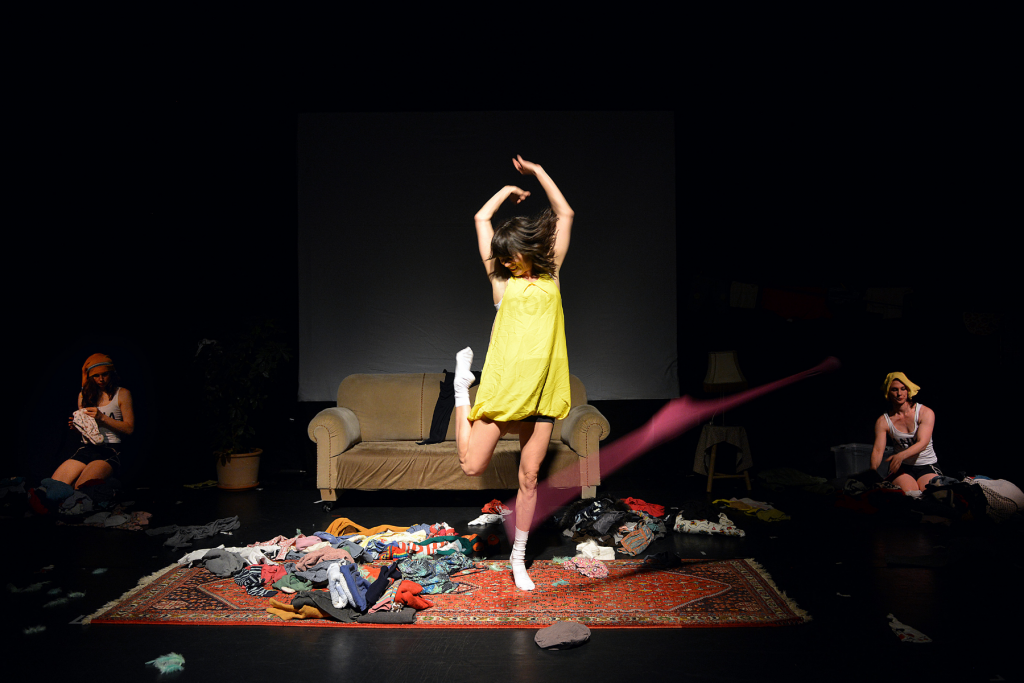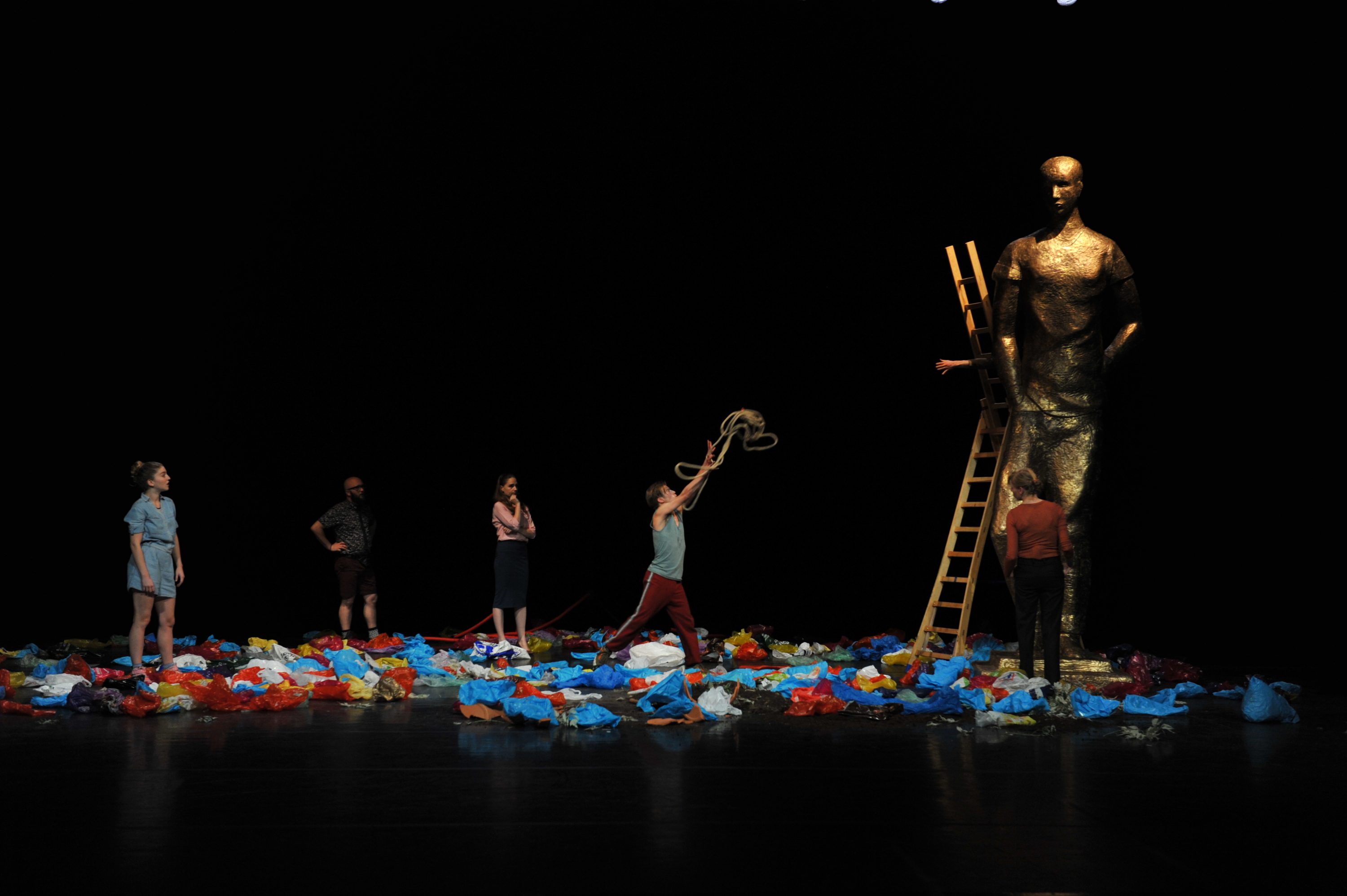The main drag in Great Yarmouth on a Saturday night. There are gaggles of teenagers, dressed in a supermarket of styles: a bit of Mod here, a bit of Punk there. Lots of Adidas, too. There are families with tots in buggies, some clutching bags of crisps or lollipops, and there are kids sitting on their dad’s shoulders waving toy lightsavers, or weaving their way through the crowd on scooters. There are young couples, and older ones too, clutching chips or cans of drink.
Some are here for Thank You for Having Us, the grand procession and show that is the highlight of this weekend’s Out There International Festival of Circus and Street Arts. Some are here just because it’s Saturday night, and where else is there to be in Yarmouth of a Saturday night? There are games arcades a-plenty, with names like Golden Nuggets and Pink Flamingo. Each arcade boasts its own brilliantly bright illuminations – flashing letters and numbers, geometric lines and grids, and symbols and images. And a cacophony of sounds erupt from each: ‘Hey you! Yes, you! Come and play me, if you dare!’ screams an electronic voice from within. There are burger bars, and fish and chip shops, and pubs. Plenty of pubs, including one offering a doggy dinner for £2-50. Ah yes, dogs – people in Yarmouth like their dogs.
Into all this comes Generik Vapeur, grandmasters (and mistress) of the large-scale, seemingly anarchic – but in reality meticulously planned and executed – processional outdoor arts intervention. This Marseille based company are veterans of the French (and Pan-European) street theatre scene, and have been doing this sort of thing for upwards of 30 years. We are in safe hands.
Music is at the heart of it all: vocalist Caty Avram, co-founder of the company and co-author of the show (the others being director Pierre Berthelot of Genrik Vapeur and collaborator Ezra Trigg of Gorilla Circus) and the other musicians – electric guitars and bass, drumkit, percussion, keyboards/electronics/sampling – are placed on a series of adapted grand pianos on wheels. The sound is cosmic – hardcore and highly percussive progressive krautrock (think Can or Tangerine Dream), with a dash of expressive New York style punky jazz, and a hint of the Pierre Henry/Spooky Tooth collaboration – plus Caty’s expressive low voice and rich accent giving it a contemporary French Cabaret twist. Although musically very different to the traditional Samba of Brazil carnival, they share with the Rio bands their relentless energy, and refusal to take a break even to draw breathe. On and on it goes…
And rising above it all are two voices, one French, one English. Each statement, each polemical rant starts with ‘J’Accuse’, and the world is called out on its excessive consumption, its immoral large corporations, its gross inequalities, its neglect of the poorer members of its societies, its burning rainforest fires, its oceans filled with plastic rubbish.
The caravan of grand pianos, each sporting at least one or often two or three musicians, are joined together and pulled along by an engine at the front. Guardians of the pianos, and procession leaders, are a motley crew of performers (some company members or regular collaborators, some local volunteers). Dressed in a steampunk ragbag mix of military jackets, wonky hats, and overalls painted with musical notes or mathematical equations, they flock and disperse, drag and heave, run and pose.
As the convoy progresses from its starting point in a small park, it passes numerous fixed stations. The first is a house converted into an Amazon(ia) depot. An endless number of cardboard boxes are passed out from a top window into waiting hands on the ladders, and away into the crowd. An hour later, I see a small boy still clutching his empty, plain brown box. There’s a metaphor there somewhere. Next is a kind of metal arcade or bower sporting a growth of plastic items, bags, bubblewrap et al, representing the ‘vortex of waste’ of our modern world, in which an eighth continent made of plastic waste has composed itself.
I can also see that there is something happening under and around this bower construction, but I’m way back in the crowd, so can’t really see, and I’m feeling rather hemmed in. I use a trick learnt at carnival in Brazil, extract myself, find a way round the back, and emerge at the front, ahead of the procession – so I witness them moving towards me.
As the cavalcade turns onto the seafront, the magnificent noise the musicians are making collides with the cacophony coming from the arcades. Everything all around is light and sound. The ‘motley crew’ light up flares, and coloured smoke mingles with the technicoloured neon. Then, they bring down the barricades – literally, as the Heras fencing separating audience from performers is torn down, piled up and scattered. It’s an exhilarating and slightly worrying moment as the audience are now very close to those pianos. Next, a wooden cart appears, and a topless baby-faced young emperor throws all his new clothes out of his cart and into the night sky, swimsuits and sweaters raining down onto the audience in a great visual image of reckless, foolish consumption.
As the procession moves along the front, there are three station stops – this piece is a collaboration with the UK’s Gorilla Circus, and we are treated to top-notch displays by the company’s acrobats at each stop: an exhilarating ‘wheel of death’, a lovely and joyous cloud swing, and a breathtaking grand finale of flying trapeze. Although it must be said that great though these are, it is a little hard to understand how the circus work fits into the concept and themes of the show, and where the collaboration lies, as it feels a little like two companies placed side-by-side. But I wasn’t there for the devising process, can only judge on what is witnessed, so who knows?
Thank You For Having Us circles around a critique of consumption and a flagging up of environmental concerns. There is a slight unease considering this in the light of the amount of rigging, kit, and transporting of large pieces of equipment in enormous trucks that creating and presenting this show entails – it’s a show about consumerism and environmentalism, rather than an environmentally friendly show! It raises questions about being part of the problem versus being part of the solution – a vital question for anyone working in, programming, or consuming Outdoor Arts. Are medium and message two different things, to be considered separately? For how much longer can we sanction and support work of this sort?
On the other hand – it is fantastic. I love it. I am very glad I have seen it, heard it, been part of it. Just as I am glad to have taken long-haul flights to Brazil at carnival time, more than once. Perhaps the plug will get pulled on the party and it’ll all stop soon – but for now, the carnival goes on. Let’s dance till the end of time.
Featured image (top): Generik Vapeur/Gorilla Circus:Thank You for Having Us (Merci de Votre Accueil. Photo: Caroline Genis.
Out There International Festival of Circus & Street Arts, 14–15 September 2019: www.outtherefestival.com
Generik Vapeur / Gorilla Circus: Thank You for Having Us (Merci de Votre Accueil) is a Sea Change Arts co-production, and its appearance at Out There Festival its UK premiere.


